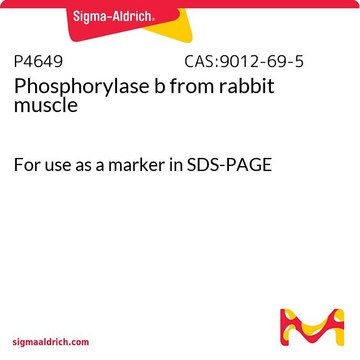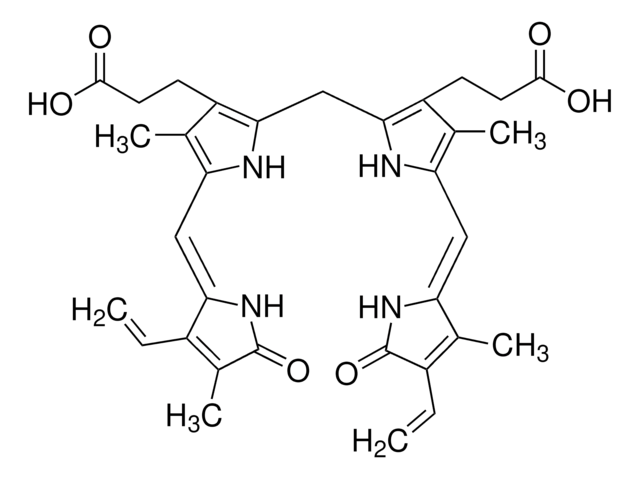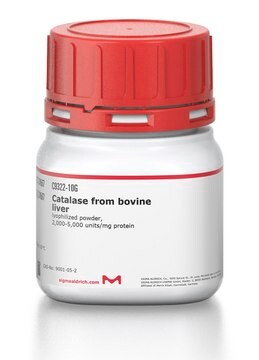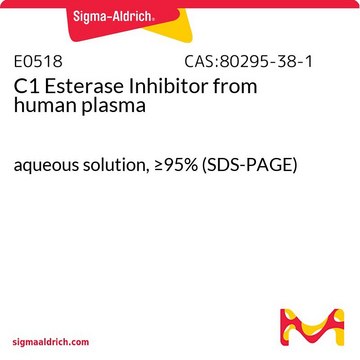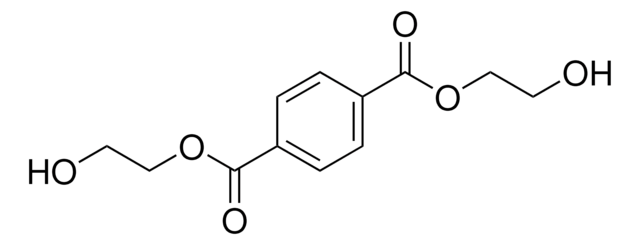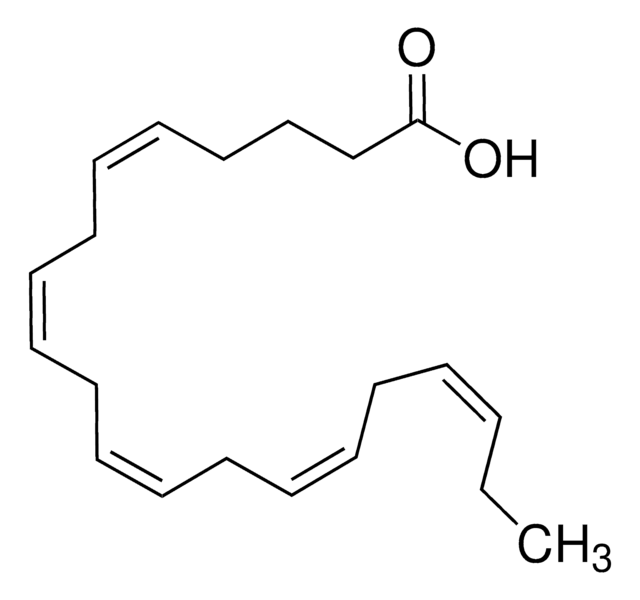P4798
L-Phenylalanine Dehydrogenase from Sporosarcina sp.
lyophilized powder, ≥6 units/mg solid
Se connecterpour consulter vos tarifs contractuels et ceux de votre entreprise/organisme
About This Item
Numéro CAS:
Numéro MDL:
Code UNSPSC :
12352204
Nomenclature NACRES :
NA.54
Produits recommandés
Source biologique
bacterial (Sporosarcina sp.)
Niveau de qualité
Forme
lyophilized powder
Activité spécifique
≥6 units/mg solid
Conditions de stockage
dry at room temperature
Concentration
≤100%
Couleur
white to light brown
Application(s)
life science and biopharma
Température de stockage
−20°C
Description générale
Research area: CELL SIGNALING
Phenylalanine dehydrogenase is a member of a large family of amino-acid dehydrogenases, which includes glutamate dehydrogenase, alanine dehydrogenase, leucine dehydrogenase, lysine €-dehydrogenase, and meso-a,€-diaminopimelate D-dehydrogenase. The three known gene sequences are octomers. It has a two-domain, three-dimensional structure.
Phenylalanine dehydrogenase is a member of a large family of amino-acid dehydrogenases, which includes glutamate dehydrogenase, alanine dehydrogenase, leucine dehydrogenase, lysine €-dehydrogenase, and meso-a,€-diaminopimelate D-dehydrogenase. The three known gene sequences are octomers. It has a two-domain, three-dimensional structure.
Actions biochimiques/physiologiques
Phenylalanine dehydrogenase (PheDH) is considered an effective enzyme to estimate the quantity of phenylalanine to distinguish phenylketonuria (PKU) disease.Moreover, it is utilized for the production of optically pure l-phenylalanine, a key component of the artificial sweetener aspartame. L-Phenylalanine dehydrogenase is a NAD+-dependent oxidoreductase that catalyzes the reversible, oxidative deamination of L-phenylalanine, which results in its degradation. L-Phenylalanine dehydrogenase is used to study phenylalanine metabolism and phenylalanine, tyrosine, and tryptophan biosynthesis.
Définition de l'unité
One unit will oxidize 1.0 μmole of L-phenylalanine per min at pH 10.5 at 30 °C in the presence of β-NAD.
Mention d'avertissement
Danger
Mentions de danger
Conseils de prudence
Classification des risques
Resp. Sens. 1
Code de la classe de stockage
11 - Combustible Solids
Classe de danger pour l'eau (WGK)
WGK 1
Point d'éclair (°F)
Not applicable
Point d'éclair (°C)
Not applicable
Équipement de protection individuelle
Eyeshields, Gloves, type N95 (US)
Faites votre choix parmi les versions les plus récentes :
Déjà en possession de ce produit ?
Retrouvez la documentation relative aux produits que vous avez récemment achetés dans la Bibliothèque de documents.
Les clients ont également consulté
Increase of Bacillus badius Phenylalanine dehydrogenase specificity towards phenylalanine substrate by site-directed mutagenesis
Yousefi F, et al.
Archives of Biochemistry and Biophysics, 635, 44-51 (2017)
Y Asano et al.
European journal of biochemistry, 168(1), 153-159 (1987-10-01)
Phenylalanine dehydrogenase produced by Bacillus badius IAM 11059 was purified from the crude extract of B. badius to homogeneity, as judged by disc gel electrophoresis. The enzyme has an isoelectric point of 3.5 and a relative molecular mass, Mr, of
N M Brunhuber et al.
Biochemistry, 39(31), 9174-9187 (2000-08-05)
Phenylalanine dehydrogenase catalyzes the reversible, pyridine nucleotide-dependent oxidative deamination of L-phenylalanine to form phenylpyruvate and ammonia. We have characterized the steady-state kinetic behavior of the enzyme from Rhodococcus sp. M4 and determined the X-ray crystal structures of the recombinant enzyme
A Pasquo et al.
Acta crystallographica. Section D, Biological crystallography, 54(Pt 2), 269-272 (1998-10-08)
The NAD+-dependent phenylalanine dehydrogenase from Nocardia sp239 has been crystallized by the hanging-drop method of vapour diffusion using ammonium sulfate as the precipitant. Two crystal forms were obtained in the presence and absence of the enzyme substrates phenylpyruvic acid or
Y Asano et al.
The Journal of biological chemistry, 262(21), 10346-10354 (1987-07-25)
NAD+-dependent phenylalanine dehydrogenases were purified 1,500- and 1,600-fold, and crystallized from Sporosarcina ureae SCRC-R04 and Bacillus sphaericus SCRC-R79a, respectively. The purified enzymes were homogeneous as judged by disc gel electrophoresis. The enzyme from S. ureae has a molecular weight of
Notre équipe de scientifiques dispose d'une expérience dans tous les secteurs de la recherche, notamment en sciences de la vie, science des matériaux, synthèse chimique, chromatographie, analyse et dans de nombreux autres domaines..
Contacter notre Service technique
